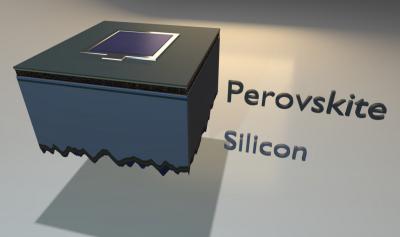The groups of Steve Albrecht and Bernd Stannowski at HZB have reached a record efficiency of 29.15% of its tandem solar cell made of perovskite and silicon.
 The illustration shows the structure of the tandem solar cell: between the thin perovskite layer (black) and the silicon layer (blue) are functional intermediate layers. © Eike Köhnen/HZB
The illustration shows the structure of the tandem solar cell: between the thin perovskite layer (black) and the silicon layer (blue) are functional intermediate layers. © Eike Köhnen/HZB
This value has been officially certified by the CalLab of the Fraunhofer Institute for Solar Energy Systems (ISE) and means that surpassing the 30% efficiency mark is now within reach.
The record value also appears in the charts of the National Renewable Energy Lab (NREL), USA. The NREL chart has been tracking the rising efficiency levels for nearly all types of solar cell since 1976. Perovskite compounds have only been included since 2013 ' and the efficiency of this class of materials has increased more than in any other material since then.
'We developed a special electrode contact layer for this cell in collaboration with the group of Prof. Vytautas Getautis (Kaunas University of Technology), and also improved intermediate layers', explain Eike Köhnen and Amran Al-Ashouri, doctoral students in Albrecht's group. The new electrode contact layer also permitted improvement of the perovskite compound's composition in the HZB HySPRINT laboratory. This compound is now more stable when illuminated in the tandem solar cell and improves the balance of electrical currents contributed by the top and bottom cells. The silicon bottom cell comes from Stannowski's group and features a special silicon-oxide top layer for optically coupling the top and bottom cells.
The team stated that all processes used to realize this one-square-centimeter cell are also suitable in principle for large surface areas. Scaling up with the help of vacuum deposition processes is very promising, as initial tests have already shown.
The realistic practical efficiency limit for tandem cells made of silicon and perovskite is about 35%. Next, the HZB team wants to break the 30% efficiency barrier. Albrecht explains that initial ideas for this are already under discussion.



